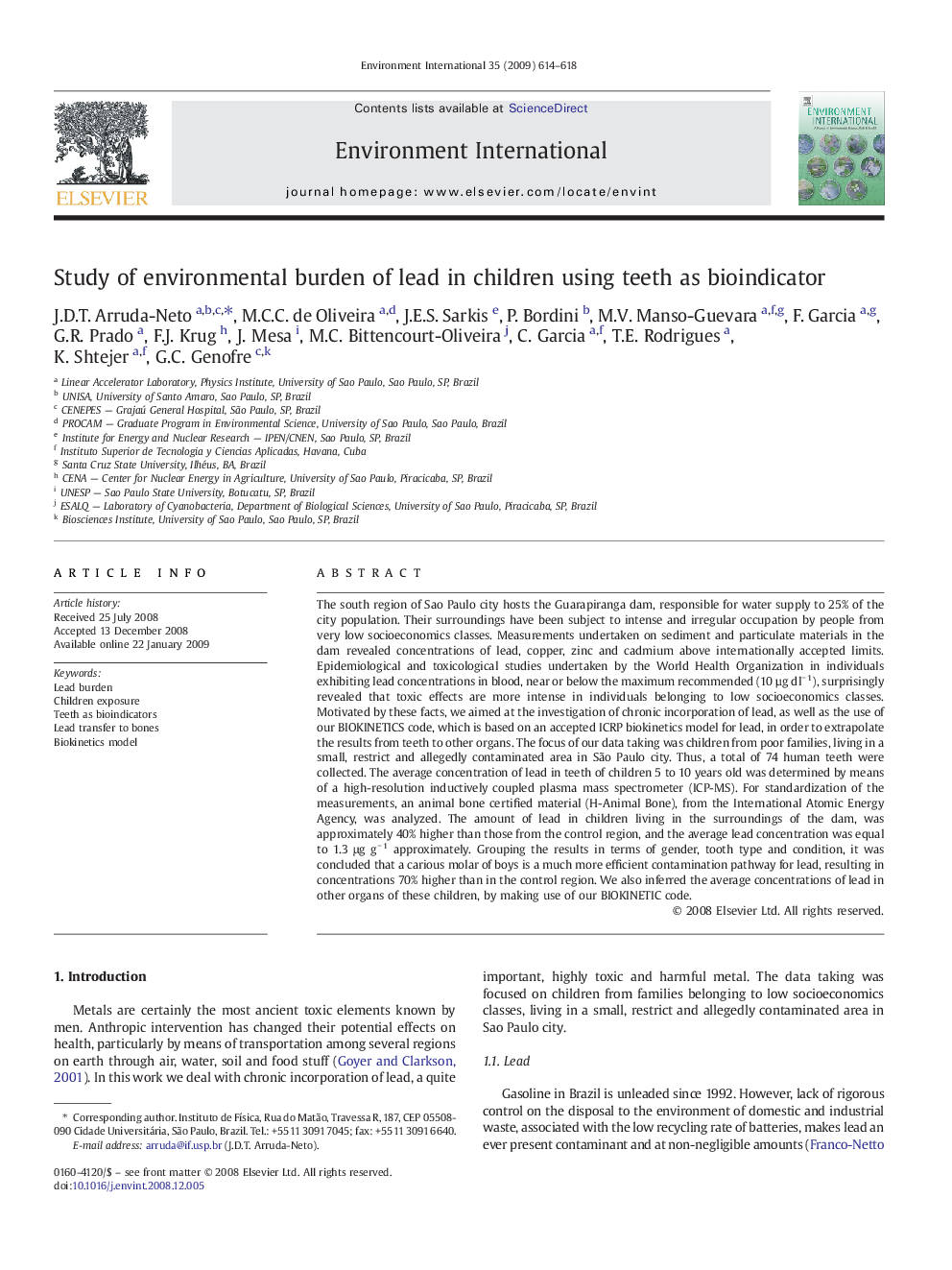| کد مقاله | کد نشریه | سال انتشار | مقاله انگلیسی | نسخه تمام متن |
|---|---|---|---|---|
| 4423548 | 1308831 | 2009 | 5 صفحه PDF | دانلود رایگان |

The south region of Sao Paulo city hosts the Guarapiranga dam, responsible for water supply to 25% of the city population. Their surroundings have been subject to intense and irregular occupation by people from very low socioeconomics classes. Measurements undertaken on sediment and particulate materials in the dam revealed concentrations of lead, copper, zinc and cadmium above internationally accepted limits. Epidemiological and toxicological studies undertaken by the World Health Organization in individuals exhibiting lead concentrations in blood, near or below the maximum recommended (10 µg dl− 1), surprisingly revealed that toxic effects are more intense in individuals belonging to low socioeconomics classes. Motivated by these facts, we aimed at the investigation of chronic incorporation of lead, as well as the use of our BIOKINETICS code, which is based on an accepted ICRP biokinetics model for lead, in order to extrapolate the results from teeth to other organs. The focus of our data taking was children from poor families, living in a small, restrict and allegedly contaminated area in São Paulo city. Thus, a total of 74 human teeth were collected. The average concentration of lead in teeth of children 5 to 10 years old was determined by means of a high-resolution inductively coupled plasma mass spectrometer (ICP-MS). For standardization of the measurements, an animal bone certified material (H-Animal Bone), from the International Atomic Energy Agency, was analyzed. The amount of lead in children living in the surroundings of the dam, was approximately 40% higher than those from the control region, and the average lead concentration was equal to 1.3 μg g− 1 approximately. Grouping the results in terms of gender, tooth type and condition, it was concluded that a carious molar of boys is a much more efficient contamination pathway for lead, resulting in concentrations 70% higher than in the control region. We also inferred the average concentrations of lead in other organs of these children, by making use of our BIOKINETIC code.
Journal: Environment International - Volume 35, Issue 3, April 2009, Pages 614–618